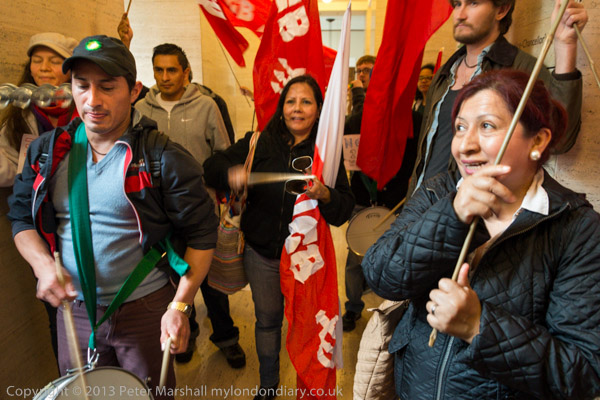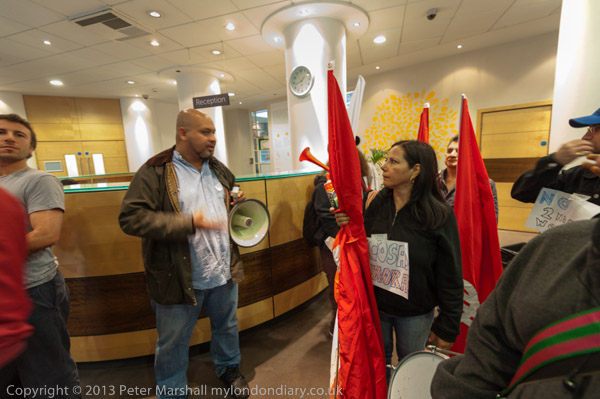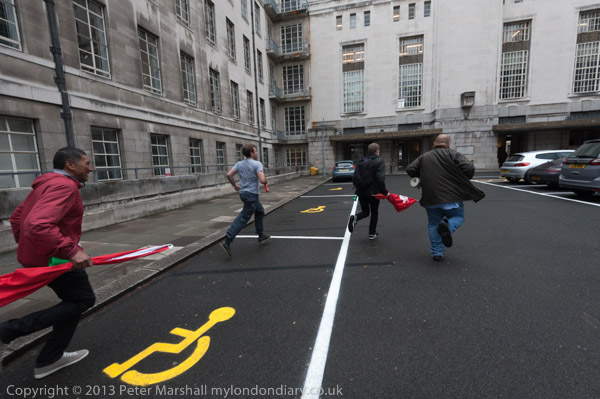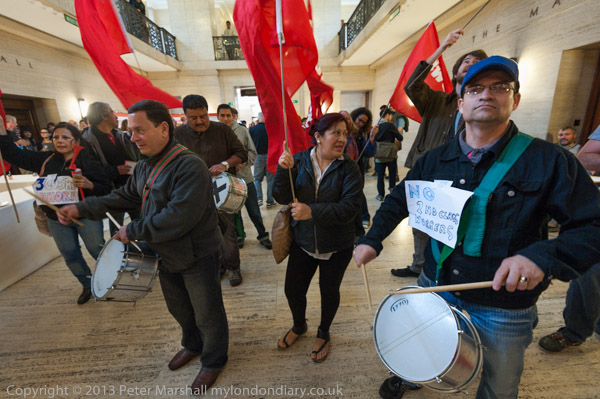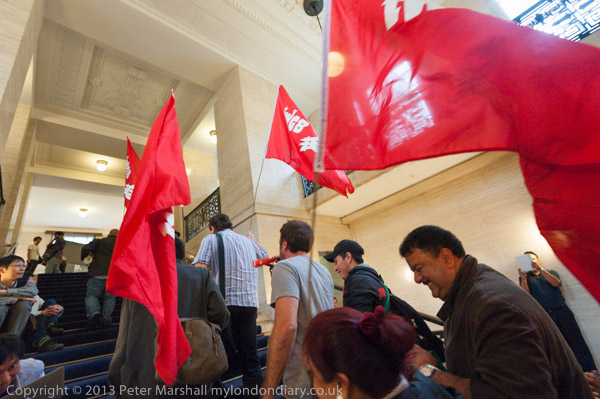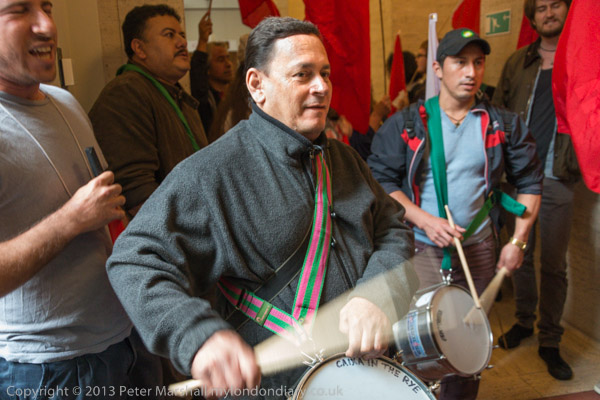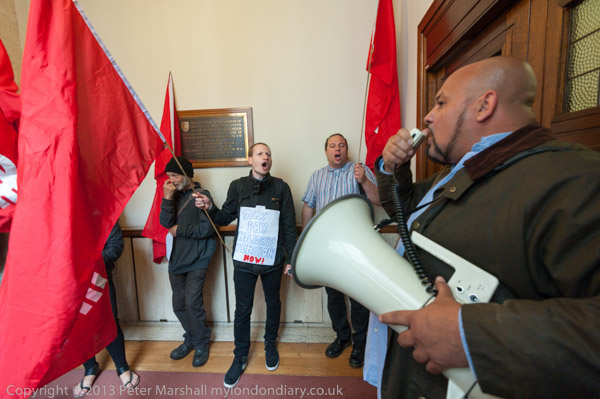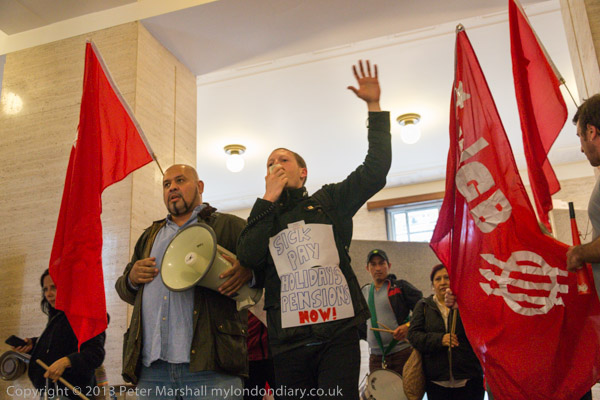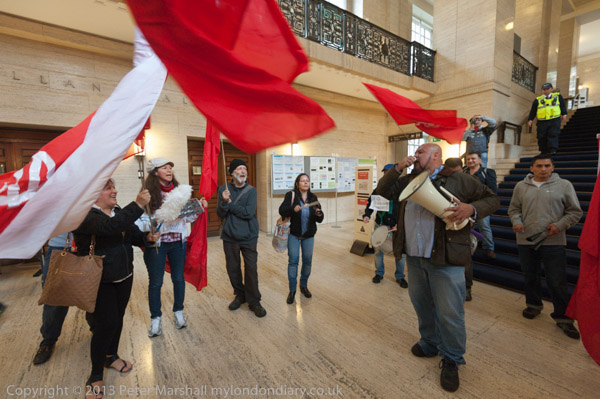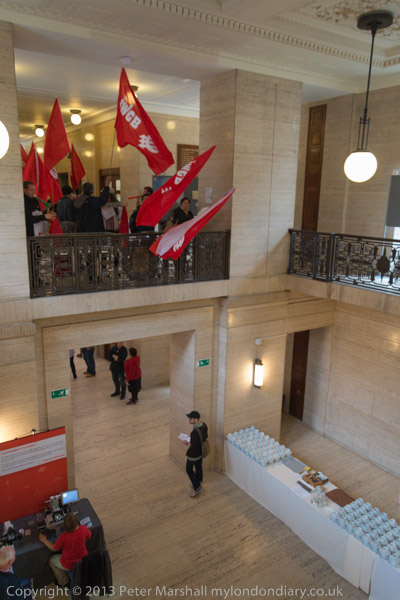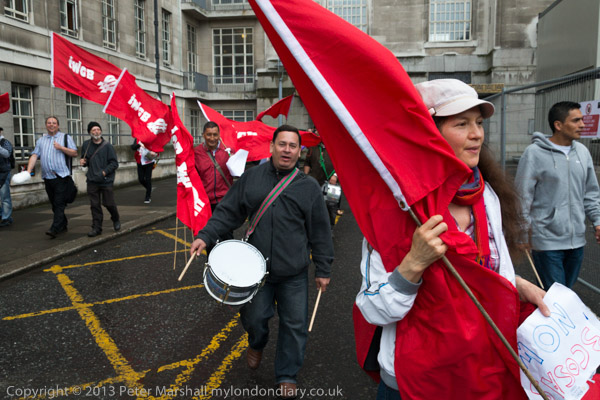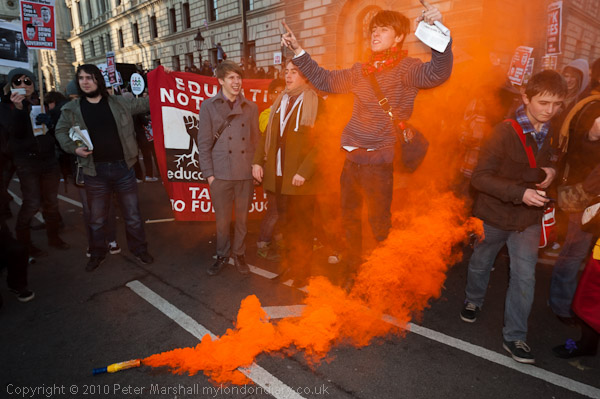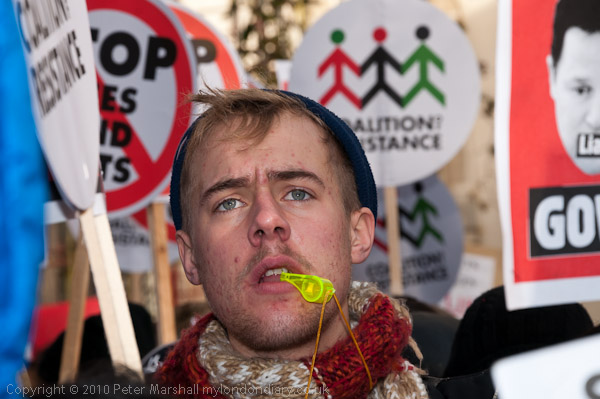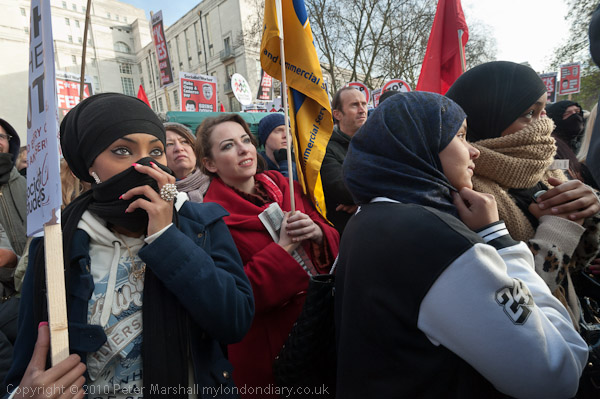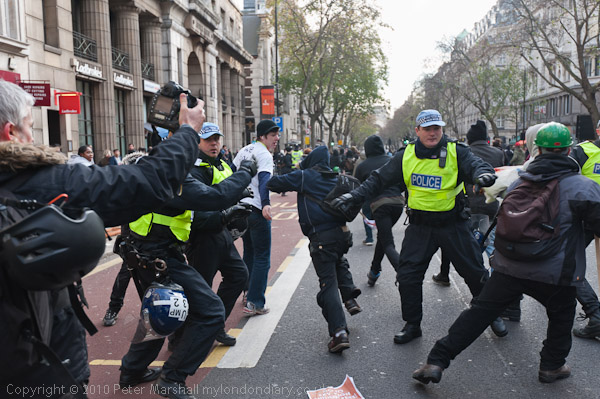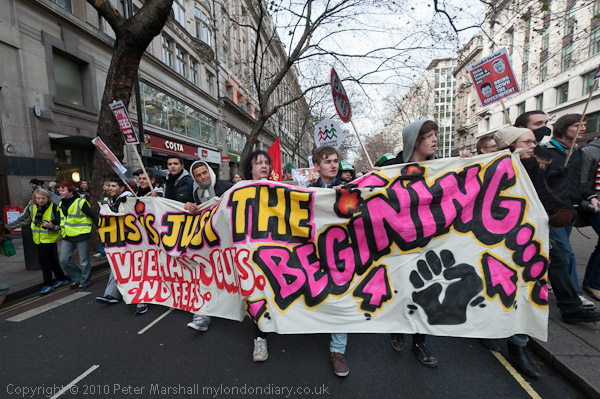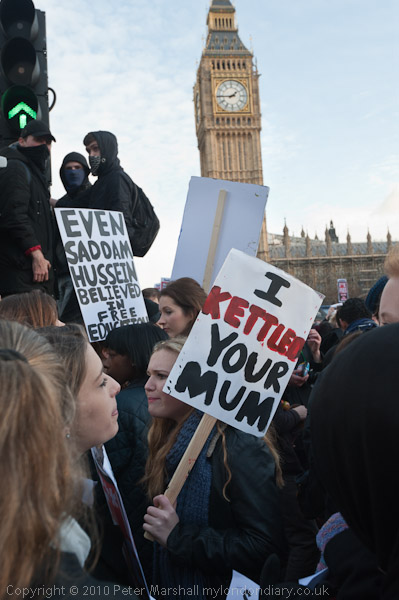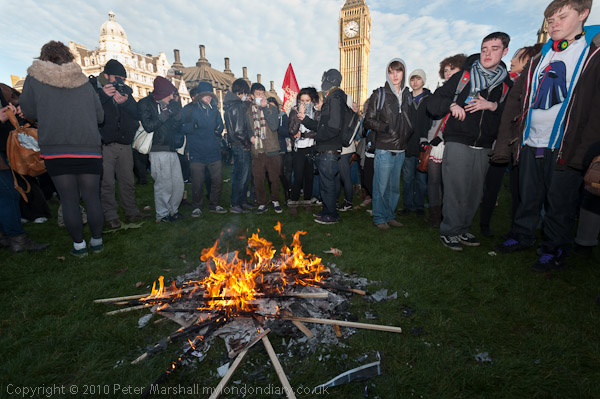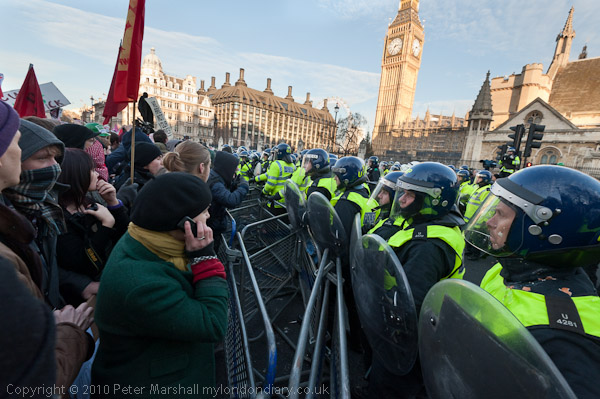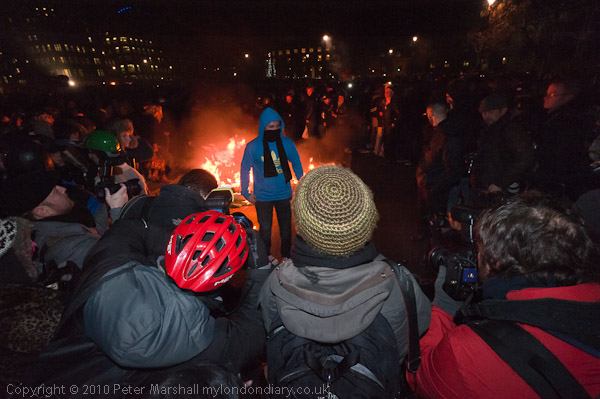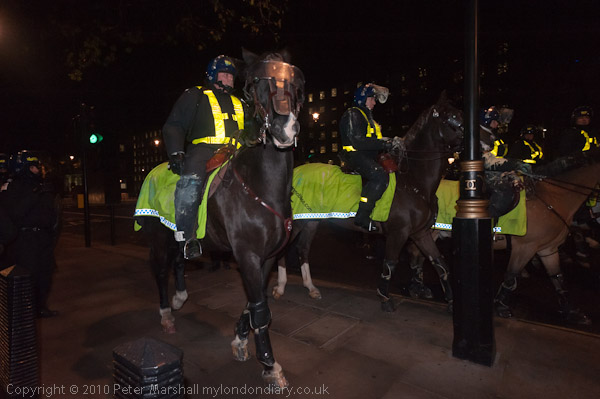Cops Off Campus National Student Protest – Ten years ago today on Wednesday 11th December 2013 I was at the University of London for a large national student protest over the use of police against student protests on campus at several universities around the country.

At Sussex University the management had called the police onto the campus or gone to the courts to prevent or oppose student protests or harass students. A number of students had been arrested.
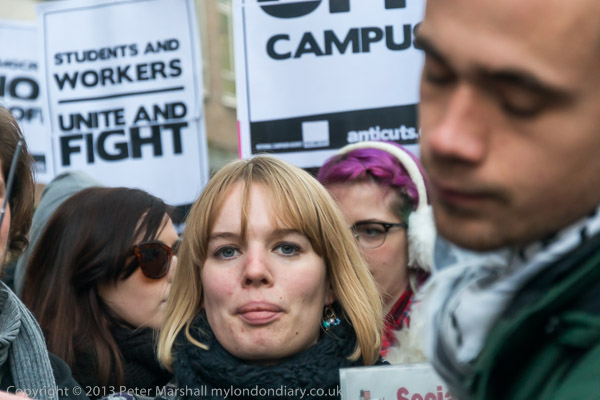
In London police had been called to protests over the closing down by management of the University of London Union and the 3 Cosas campaign supported by students for a living wage and decent conditions of employment – sick pay, holiday pay and pensions – for the low paid workers on campus. The cleaners union, the IWGB, had come to support the students at this protest.
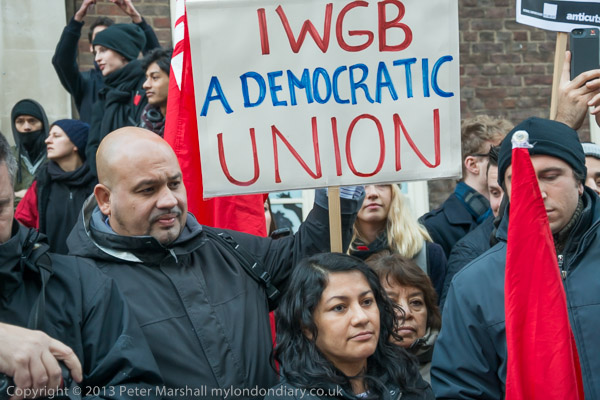
The previous week in London there had been a large police presence harassing and arresting students at an emergency protest over police brutality in their eviction of students from the Senate House that Wednesday, with a total of over 40 arrests on that day and the following day.
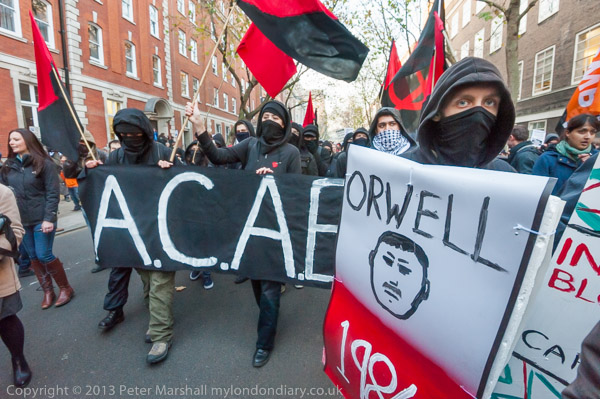
When I had arrived for that protest, there were police vans parked in all the side streets around and later the police made several failed attempts to kettle the large group of students at the protest despite it being intended as an entirely peaceful and orderly march around some of the various sites of the university in the area.
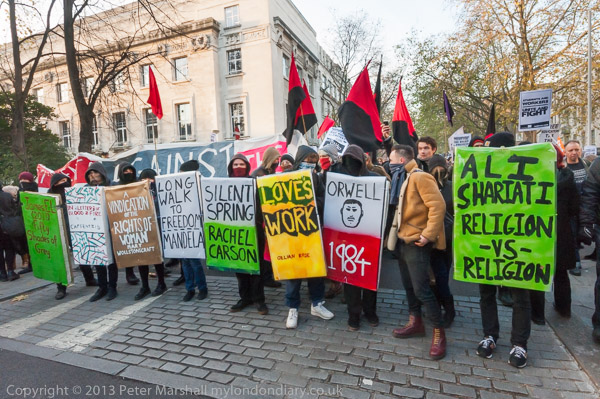
The police actions on that occasion seemed totally unnecessary and it was hard not to see them as a deliberate attempt to provoke a violent response, but the students kept their heads, moved rapidly and outwitted them. My account of the protest at ‘Cops Off Campus’ Protest Police Brutality‘ ended with the sentence: “It did seem an incredible and pointless waste of public money, and it resulted in more inconvenience to the public than if the event had not been policed at all.”
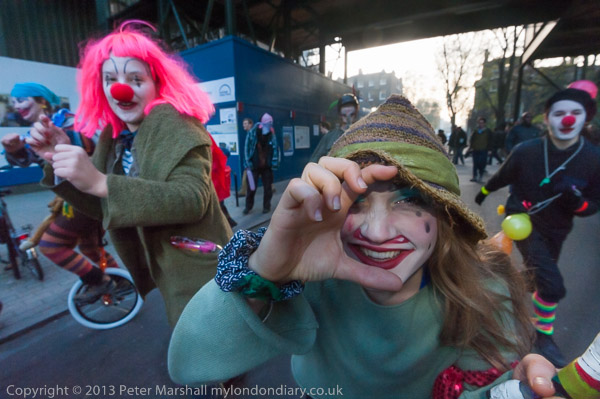
I don’t for a moment imagine the police had been influenced by my account, though I do know from occasional comments made to me by officers at various protests that some of them at least followed me. I’m sure that they had come to the same obvious conclusion independently, and for the protest on 11th December there was not an officer in sight in the whole area.

There were speeched outside the University of London Union before the march moved off, at its front a ‘Book Bloc’ carrying large backed polystyrene foam shields with book titles, including George Orwell’s ‘1984’, particularly appropriate as the Senate House is said to have inspired Orwell’s ‘Ministry of Truth’, and alongside it were Mandela’s Long Walk to Freedom, Mary Woolstonecraft’s ‘A Vindication of the Rights of Women’, E P Thompson’s ‘The Making of the English Working Class’ and other classics.
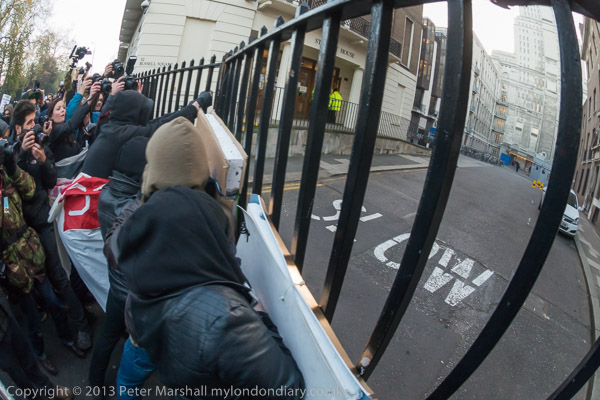
When the march came to the gates to Senate House from Russell Square they found that these gates, normally open, had been locked and chained to prevent them entering, despite most of those present being members of the university. They are stout metal gates but the chains could not for long resist the bodies pushing against them and they gave way and the crowd surged into the car park.
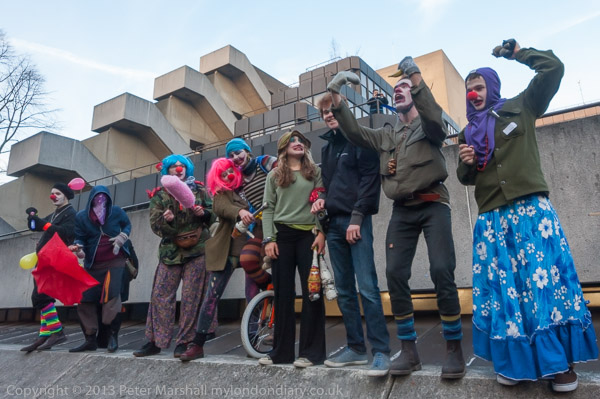
After a few minutes the marchers made their way back to Russell Square and continued to march around the area, eventually coming to a halt outside SOAS, where the samba band was playing and they sat down, stood around or danced.
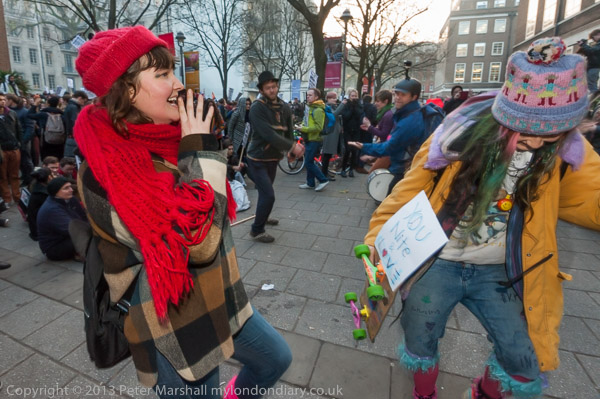
Later some went on to protest outside the law courts where the inquest on Mark Duggan, shot by police in 2011, was ending and then to Whitehall, but I left as I was getting tired and needed to file my pictures.
More at Cops Off Campus National Student Protest.
